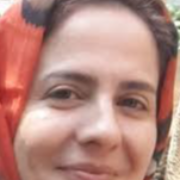Dear Editor,
I read with interest the article of Dr Yousfichayjan et al. about “autosomal recessive polycystic kidney disease and epidemiologic factors” (1). The author reported on sixty children with diagnosis of autosomal recessive polycystic kidney disease (ARPKD) from the province of Arak. The number was surprisingly high compared to ADPKD that is the most common inherited disease. The ARPKD is a very rare disease with high morbidity and mortality and wide variation in clinical presentation.
Our previous nationwide registry on CAPD children revealed that 8.3% of children had polycystic kidney disease without determining the subtypes (2). In a retrospective study by Ataie et al., 1.8% of CKD children had infantile polycystic kidney disease during 23 years of observation (3). Another nationwide survey by IranSPN members revealed that 229 (7.75%) out of 2940 patients had PKD without categorizing the type of inheritance (4).
Considering the total population of Iranian children under 15 years, the overall estimated incidence of PKD would be approximately 1.63 cases per 100000 individuals. It was interesting that in a small province of Arak with total population of 1413959 (5), the incidence of APKD alone would be estimated as 21.21 cases per 100000 individuals in children younger than 15 years.
Personally, I am very interested in receiving more information about the following missed data in this original article; the time period of data collection, prenatal history, the basic clinical findings, ultra sound report of abdomen and kidney, the result of renal or liver biopsy, the consanguinity state of parents, the numbers of affected siblings, and the final outcome.
As a collaborator of Arepkd.org (6) and considering that I hold registration and ethic code number IR.IUMS.REC 1395.95-02-30-28859 from Iran University of Medical Sciences for genetic study of ARPKD patients, I am ready to collect samples to perform a genetic study free of charge on affected patients and families. I would welcome further genetic studies on these patients if the author is able to obtain permission from the family.
